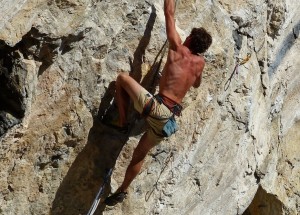Critical Climbing: Safety Equipment You Shouldn’t Skip
 Rock climbing is one of those activities that’s all at once athletic, complex, and exhilarating. It’s not the type of sport that should be approached lightly. There is always danger associated with each adventure, but you can alleviate those concerns with the proper equipment. Explore some of the safety equipment you shouldn’t skip the next time you’re ready to climb a mile.
Rock climbing is one of those activities that’s all at once athletic, complex, and exhilarating. It’s not the type of sport that should be approached lightly. There is always danger associated with each adventure, but you can alleviate those concerns with the proper equipment. Explore some of the safety equipment you shouldn’t skip the next time you’re ready to climb a mile.
Harnesses
One of the most recognized and important pieces of climbing equipment is the harness. These specialized loops wrap around your legs and waist so your center of gravity is supported. Ropes connect through the harness, which gives you support on any climbing surface. Ideally, you want to pick a harness that feels comfortable around your hips. Every brand has a slightly different shape to their product. Find that perfect one for your body and wear it during each adventure.
Chalk
Accidents happen in an instant. Without the proper gear, falls from great heights, serious injuries on rock surfaces, and broken bones can be the result. A simple yet effective way to stay adhered to any rock surface is by adding chalk to your hands. Chalk soaks up sweat while allowing you to grab perfectly onto any crevices. Keep extra chalk in a small bag tied around your waist. Use ample amounts as you go. This inexpensive item can save a life.
Climbing Shoes
Your feet need different gear to adhere to rock walls. Look for climbing shoes with strong, rubber soles. Try on several different pairs so you can feel the tension or looseness in the design. Shoes should be flexible enough to maneuver into tight spaces, but must also be strong to avoid any tears or damage out in the wild. Replace the shoes as they wear down because they’ll lose stability over time.
Your Instructor
Deciding to climb a mountain without the proper instruction is a disaster waiting to happen. Don’t skimp on hiring a quality instructor who offers you every tip imaginable. He or she may have other equipment suggestions that will otherwise improve your experience. Find ways to go faster with safety in mind. Remember, your instructor is also a resource that’s priceless when it comes to safe climbing.
Get to know the other equipment, such as carabiners and dynamic rope, because you’ll eventually have your own stock of items at home. Be aware of each item’s use as well as wear indicators. Being safe in nature is possible with attention to detail and good training.













